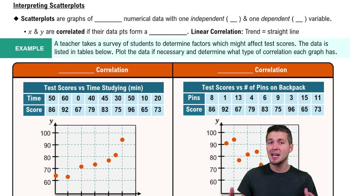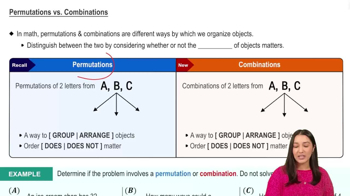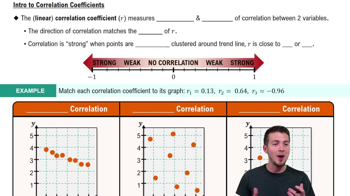Here are the essential concepts you must grasp in order to answer the question correctly.
Scatterplot
A scatterplot is a graphical representation of two variables, where each point represents an observation in the dataset. It helps visualize the relationship between the variables, allowing for the identification of patterns, trends, or correlations. In the context of modeling, analyzing the scatterplot is crucial for determining which mathematical model may best fit the data.
Recommended video:
Scatterplots & Intro to Correlation
Mathematical Models
Mathematical models are equations or functions that describe the relationship between variables in a dataset. Common types include linear, quadratic, logarithmic, exponential, and power models. Each model has distinct characteristics and is suitable for different types of data patterns, making it essential to choose the right model based on the observed trends in the scatterplot.
Recommended video:
Permutations vs. Combinations
Model Fit
Model fit refers to how well a chosen mathematical model represents the data. It can be assessed using various statistical measures, such as R-squared, residual analysis, or visual inspection of the scatterplot. A good model fit indicates that the model accurately captures the underlying pattern of the data, while a poor fit suggests that the model may not be appropriate for the dataset.
Recommended video:
 Verified step by step guidance
Verified step by step guidance Verified video answer for a similar problem:
Verified video answer for a similar problem:



 2:13m
2:13m